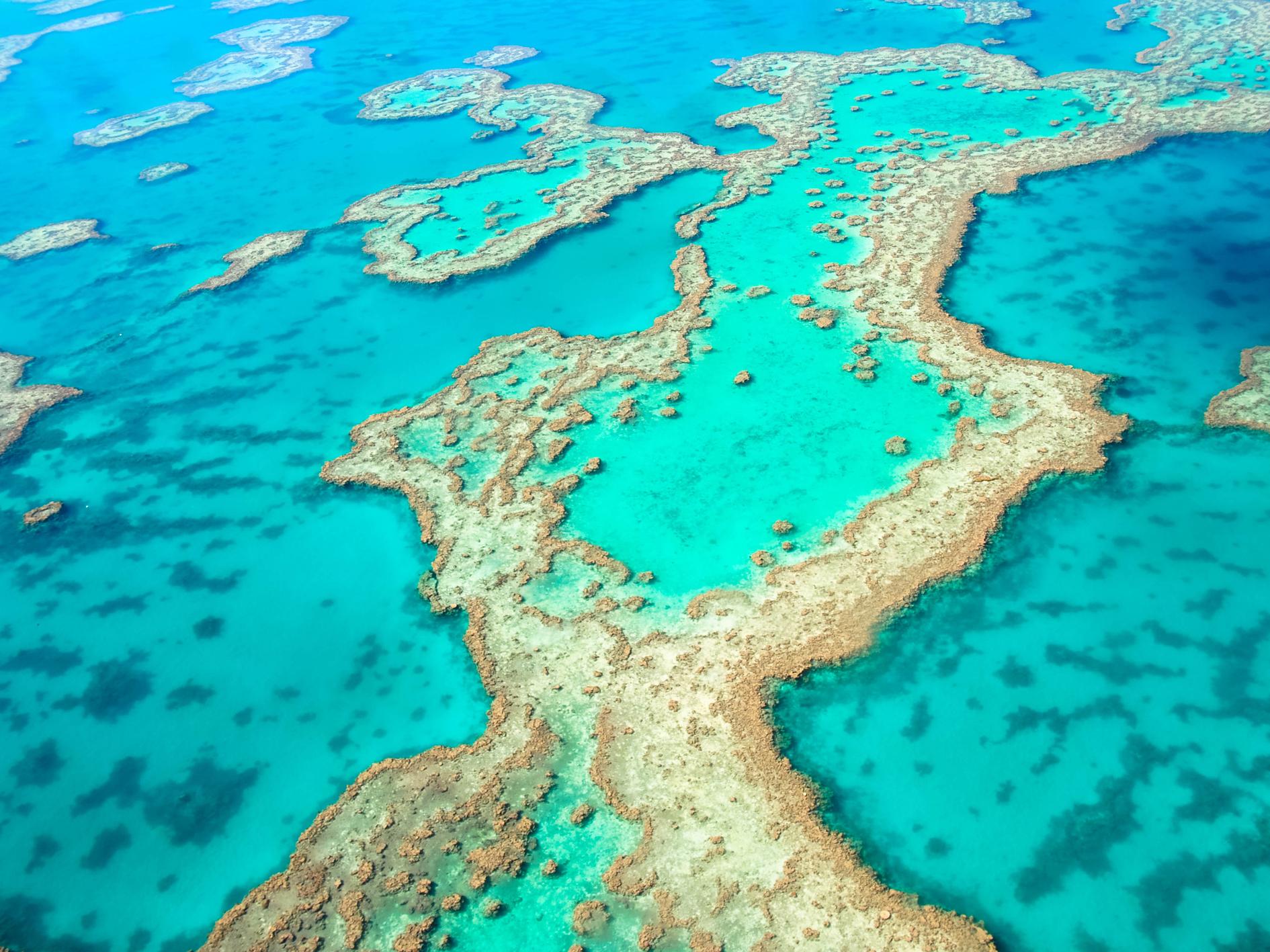‘Sun shield’ could be used to protect Great Barrier Reef from warming, say scientists
'This is a great example of developing and testing out-of-the-box solutions,' says coral expert

Your support helps us to tell the story
From reproductive rights to climate change to Big Tech, The Independent is on the ground when the story is developing. Whether it's investigating the financials of Elon Musk's pro-Trump PAC or producing our latest documentary, 'The A Word', which shines a light on the American women fighting for reproductive rights, we know how important it is to parse out the facts from the messaging.
At such a critical moment in US history, we need reporters on the ground. Your donation allows us to keep sending journalists to speak to both sides of the story.
The Independent is trusted by Americans across the entire political spectrum. And unlike many other quality news outlets, we choose not to lock Americans out of our reporting and analysis with paywalls. We believe quality journalism should be available to everyone, paid for by those who can afford it.
Your support makes all the difference.A protective film 50,000 times thinner than a human hair could be used to protect coral reefs from rising temperatures.
By applying a layer of protection to the surface of the water researchers think parts of the Great Barrier Reef could be effectively cooled, preventing deadly coral bleaching events.
This ‘sun shield’ is made from the same substance that makes up the coral skeletons themselves – calcium carbonate.
“It’s designed to sit on the surface of the water above the corals, rather than directly on the corals, to provide an effective barrier against the sun,” said Anna Marsden, managing director of the Great Barrier Reef Foundation.
A small-scale trial using this method conducted by the foundation has produced encouraging results.
“Scientists tested the effectiveness of the one molecule thick film on seven different coral species in simulated coral bleaching event conditions at the Australian Institute of Marine Science’s National Sea Simulator,” said Mr Marsden.
These tests showed that the film reduced light by up to 30 per cent, and therefore reduced levels of coral bleaching in most species being studied.
Bleaching is a major threat to the Great Barrier Reef and other coral-rich areas around the world, and was responsible for the “largest die-off of corals ever recorded” that took place in 2016.
As water temperatures rise due to climate change, corals are placed under increasing stress. This causes them to expel the algae that provide them with the energy they need to survive, leading to bleaching.
Due to this pervasive and seemingly unavoidable threat, coral experts have called for “radical interventions” to save the world’s reefs.
Proposals already being considered by scientists include everything from genetic modification of corals to geoengineering the atmosphere in an effort to cool the reefs.
As the “sun shield” would be completely biodegradable, the scientists behind it think they should avoid any of the unintended consequences that could result from more radical methods.
“This is a great example of developing and testing out-of-the-box solutions that harness expertise from different areas,” said Ms Marsden.
“In this case, we had chemical engineers and experts in polymer science working with marine ecologists and coral experts to bring this innovation to life.”
Ms Marsden noted that this was not intended as a solution that could be rolled out across all 348,000 square kilometres of the Great Barrier Reef.
However, she said it could have potential as a means of protecting particular high value or high risk parts of the reef.
“The concept needs more work and testing before it gets to that stage, but it’s an exciting development at a time when we need to explore all possible options to ensure we have a Great Barrier Reef for future generations,” she said.
Join our commenting forum
Join thought-provoking conversations, follow other Independent readers and see their replies
Comments